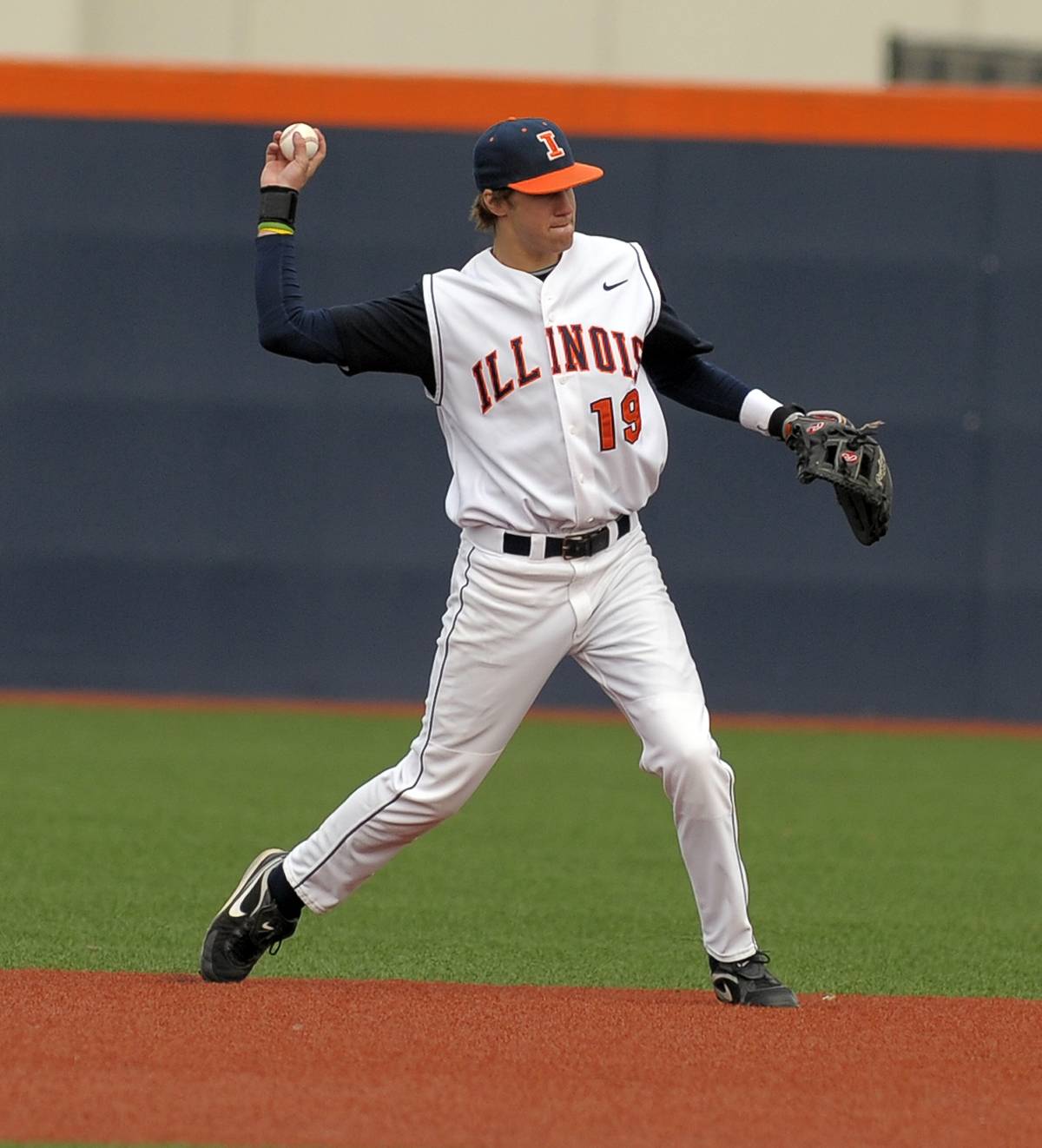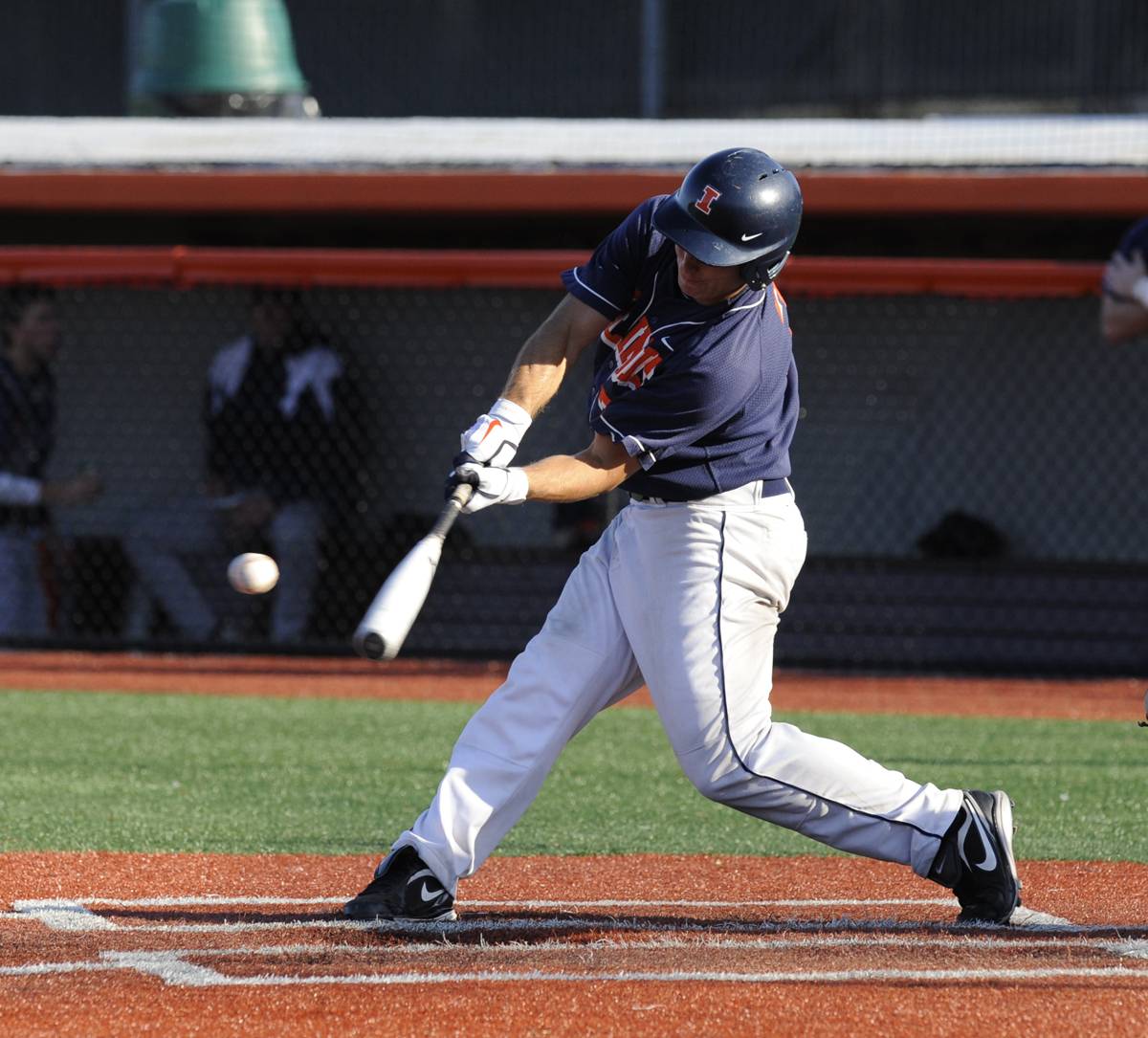 Thomas Lindauer and Reid Roper make up the starting middle infield for the Illinois baseball team, at shortstop and second base respectively, and are usually two of the more quiet players off the field.
Thomas Lindauer and Reid Roper make up the starting middle infield for the Illinois baseball team, at shortstop and second base respectively, and are usually two of the more quiet players off the field.
They are the last players their teammates expect to be talking to each other on the field all throughout games, practices and warm-ups; but they’re communicating with each other all the time, yet no one really seems to notice.
It’s because Roper and Lindauer can speak to each other in ASL, American Sign Language. They do it so subtly that no one on their team seems to even notice it.
“Do they?” said Illini first baseman Jordan Parr with a laugh. Parr plays less than 90 feet away from them at first base. “I’ve never noticed.”
“I haven’t really seen that,” said Illini head coach Dan Hartleb laughing as he heard about it. “Maybe it’s more of a joke between them?”
It’s no joke. Although Roper and Lindauer aren’t completely fluent in sign language, they know enough to hold a conversation. The two don’t flaunt the signs for everyone to see, usually they’re very discrete.
“It’s very subtle and kind of quick hand movements,” Lindauer said. “Throwing up a few letters and getting it over with before anybody can see. Apparently if our first baseman doesn’t see it then I’m sure most people don’t.
“But every now and then we’ll talk back and forth without saying everything and everybody will be like, ‘What are you guys talking about?’ We just continue our conversation so it’s kind of funny.”
Roper and Lindauer are the same age, but have different years of eligibility (Lindauer is a sophomore, playing just sparingly last year and Roper is a redshirt freshman).
Coming out of high school, both players needed an additional year of foreign language. They each decided against taking more Spanish, saying they just weren’t any good at it. Roper decided to take Speech and Hearing Science 121 American Sign Language in the fall of 2010 because he wanted to learn to communicate with a different culture. He then convinced Lindauer to take it as well.

“Reid seemed to like it and I struggled with Spanish in high school, so I figured I should take up sign language and see where it went,” Lindauer said. “I stuck with it and it’s gotten to the point where it has gotten kind of fun now in practice with me and Reid.”
They use sign language with each other in the clubhouse, during practices, warm-ups and even during games. When they’re on the field, the communication is all baseball related. They talk about everything from who’s covering first second on a steal, how to play a runner on second, pickoffs and defensive positioning.
Sometimes, however, the talks get a little more fun.
“When we’re playing catch or doing other stuff around practice we can make jokes about someone else that doesn’t know the language or something like that,” Roper joked. “Just have fun with it.”
Their unique way of communicating has helped the two teammates build some chemistry together. Roper spent most of last season rehabbing from injury, so this year is the first time he and Lindauer have had a chance to mesh.
“I think things have gotten better since the beginning of the year,” Lindauer said. “We can tell defensively we feel a lot more comfortable with each other. We kind of know where each other is going to be, like on double plays and things like that. Where he wants a feed, and where I want a feed and its working out really well.”
Both players know exactly how and where their counterpart wants the ball fed to him in certain situations.
“We feel comfortable with each other,” Roper said. “It makes it fun when you get a ground ball to short. You know you’re going to turn a double play. It’s exciting for us and I think exciting for fans too.”
The chemistry the two are developing off the field has benefitted the Illini defensively. If a double play is a pitcher’s best friend, then Illini pitchers have two best friends in Roper and Lindauer. Illinois is turning an average of 1.24 double plays per game, good enough for ninth in the NCAA.
Neither Lindauer nor Roper would take any of the credit for the Illini’s success.
“I just think our pitchers are doing a really good job of keeping the ball down,” Lindauer said.
“When there’s a guy on first, it starts at the pitcher who makes a good pitch and gets a ground ball for us and then from there just rely on what we do in practice every day,” Roper said.
Not to understate the importance of pitching, but a solid middle infield is just as important for a team to consistently turn double plays.
“They’ve done a good job and they get along well together,” Hartleb said. “You’ve got two very good athletes out there together, guys with arm strength and some quickness. Both have good feet on the infield and hand quickness, so they’re giving each other very good feeds and they’ve got athletic ability.”
Lindauer is in Speech and Hearing Science 221 American Sign Language II now, still learning to perfect the signs. Roper has already finished the class and helps Lindauer whenever he’s struggling.
And Illini baseball players speaking sign language may be spreading. The two convinced freshman catcher Kelly Norris-Jones to take the introductory course as well.
Finding different ways to communicate seems to be helping Lindauer and Roper develop into one of the best double play combinations in the nation.
Photo Credit: University of Illinois








